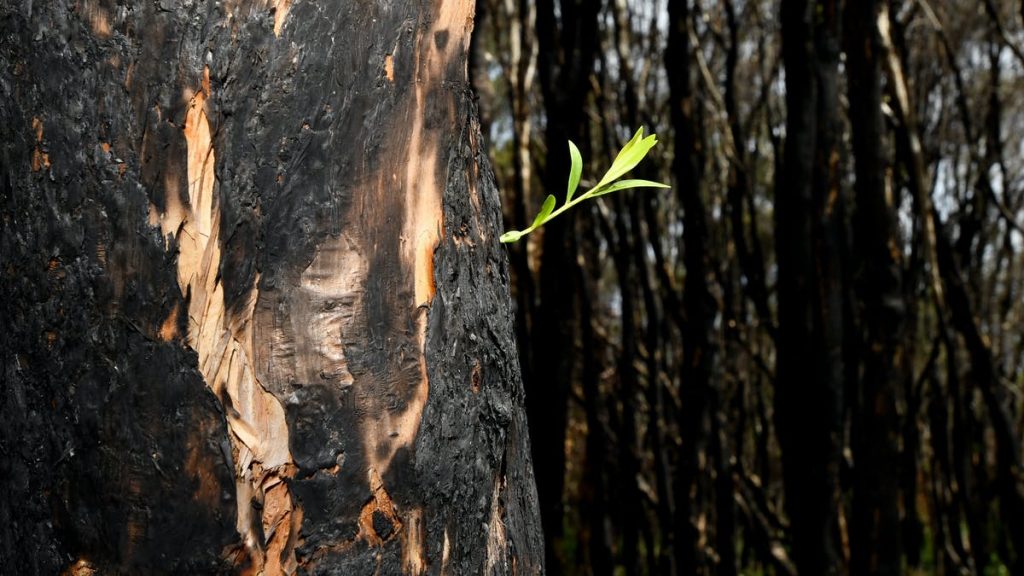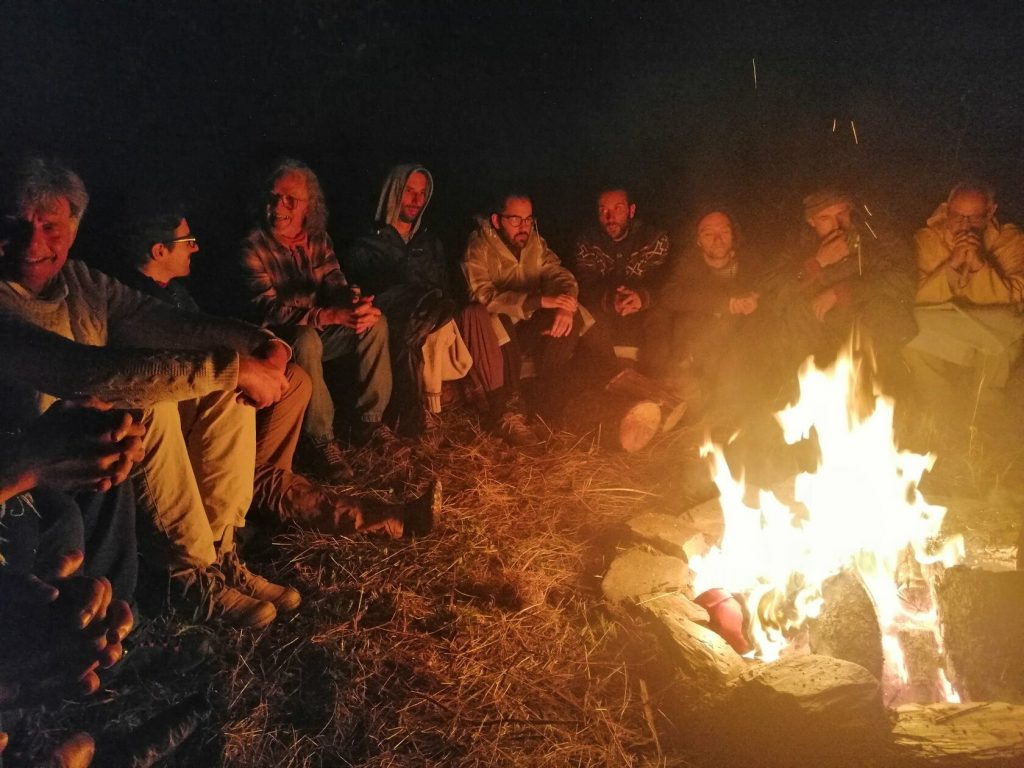Wealth and Abundance
“The master can keep giving,” the Tao Te Ching teaches, “because there is no end to her wealth.” What is meant by wealth here? I sometimes struggle with this question. Like most people, I grew up in a society that equates wealth with money and material possessions.
But in an age of environmental devastation and growing inequality between the rich and the poor, I want to rethink what we mean by wealth, and the phrase “there is no end to her wealth” invites examination.
Some of the spiritual teachers I respect, from Byron Katie to Eckhart Tolle, suggest that material wealth and abundance are often a manifestation of internal abundance.
But I worry that these messages overlook the plight of America’s and the world’s poor. I worry, too, that in an age of climate change and environmental destruction, cultivating a “mindset of abundance” is a distraction from the ever-mounting overuse of resources.
So, is it time to be more explicit in what we mean by wealth and abundance? Is it time to unlearn one vision of wealth that we have been carrying in America and the Western world for hundreds of years and re-learn another?
I find it helpful to look back at teachings and mindsets about wealth across traditions and time. Every spiritual tradition, of course, grapples with questions and attitudes towards wealth.
“It is easier for a camel to fit through the eye of a needle,” Jesus famously pronounced, “than for someone who is rich to enter the kingdom of God.” Jesus identified two kinds of richness: that found in material wealth and that found in spiritual wealth. In Luke 12, Jesus suggests that those who enjoy material wealth will be in trouble in the afterlife, but those who have the “richness” of God will be saved. “This,” Jesus says, referring to a difficult end to one’s life, “is how it will be with whoever stores up things for themselves but is not rich toward God.” Those who store up “things” are not rich in the ways that matter.
Henry David Thoreau, like Jesus, suggests that people mistake what they consider wealth and value, favoring inanimate ‘things’ (to use Jesus’s word) for living relationships. In 1863, in his essay “Life Without Principle,” Thoreau wrote: “If a man walks in the woods for love of them half of each day, he is in danger of being regarded as a loafer; but if he spends his whole day as a speculator, shearing off those woods and making earth bald before her time, he is esteemed an industrious and enterprising citizen. As if a town had no interest in its forests but to cut them down!”[1]
Thoreau points out that in mid-nineteenth-century America, only in the act of cutting down the tree for its material wealth is someone considered ‘industrious.’ He implies that New England culture does not know how to value the inherent wealth of a living tree and living forest.
As Thoreau suggests in “Life Without Principle,” the Tao Te Ching, written in 4th-century BC China, teaches us that the wise person knows that life is impermanent and cannot be “possessed.” “Things arise and she [the master] lets them come; things disappear and she lets them go. She has but she doesn’t possess.”
Most of our current definitions of wealth tend to be narrowed to an accumulation of material possessions. But this definition of wealth is not inherent to the meaning of the word and, indeed, is largely cultural.
In Joe Kane’s book, Savages, about a trip to the Amazon jungle to visit people whose land was being threatened by oil development, Kane portrays a culture that defines wealth very differently from the way we define it today: material accumulation is a sign of weakness and insecurity, while trusting one’s ability to successfully interact and be in a supportive relationship with the surroundings is a sign of wealth and strength.[2]
In the book, Kane needed to visit another tribe, so he and two other men set out for a three-day walk through the jungle with nothing but a machete and the clothes on their backs. It was assumed that they could get by in the jungle on their own; to carry food and water would only slow them down and was considered a sign of insecurity.
Those who gathered things and kept them for themselves were insecure, weak, and poor, while those who shared the most demonstrated their power and ability to provide for themselves and others. The abundance of this society came from its relationship to the natural world around it.
Can we, as a society, see wealth in terms of relationships?
Environmental thinker Frances Moore Lappe invites us to shift our frame of consciousness around wealth. “Scarcity mind,” to use a term Lappe has coined, comes from a culture that hoards, a culture in which wealth accrues more wealth, and in which wealth is not shared.[3] It is not scarcity, Lappe points out, that keeps people hungry, but inadequate relationships: systems that don’t allow for sufficient distribution of plentiful resources.
Our society, Lappe believes, is dominated by what she calls the three S’s: scarcity, separateness, and stasis. But she encourages us to move toward what she calls the three C’s: connection, continuous change, and co-creation.[4]
Once we embrace the connection with others and the natural world; recognize the continually changing nature of the world and our wavering ability to control it; and co-create with those around us, we then are able to fulfill our greatest potential and access the true, sustainable wealth and abundance of our world.
It is perhaps no surprise that as the gap between the rich and the poor deepens, as people feel increasingly insecure and isolated, and as our environmental crisis worsens, we as a society have been operating from a mindset of scarcity—ultimately, electing a president who represents all the false values of mistaking material hoarding for wealth.
The grasping that this kind of wealth represents is specifically warned against in the Tao Te Ching: “Chase after money and security and your heart will never unclench.”
It is time to unlearn this grasping.
I imagine a world in which relationships are seen as wealth; in which education, parenting, art making, bio-conscious farming, and reverence toward the world around us, toward all species, people, and the natural world are most prized in our economic and value systems. This, it seems to me, would be a world that accurately defines wealth and abundance.
It may be true, as contemporary spiritual teachers sometimes say, that internal abundance leads to external abundance, but if A leads to B, it does not logically follow that B is an indicator of A. A large bank account is not alone a sign of strong relationships, happiness, health, or relational wealth.
Similarly, it’s important that our contemporary spiritual teachers continue to remind us that if we have strong relationships and a sense of fulfillment and alignment, if others have our backs even if we may fall down, and if we live in a sustainable relationship with the natural world around us, then this is true abundance and wealth, even if our bank accounts are not very large.
After all, the root of the word ‘wealth’ comes from the middle English word weal which meant happiness, prosperity, health. How we use language matters, and how we define wealth helps us clarify for ourselves the future that we want.
When we unlearn one meaning of wealth and reclaim another, we can move toward a future—both individually and collectively—that is more sustaining and sustainable. And when we redefine wealth, we can better choose the institutions and people we want to help lead us into that future.
References
[1] Thoreau, H.D. (1863). The Atlantic Monthly, A Magazine of Literature, Art, and Politics, XII pp. 484-95. Boston: Ticknor and Fields.
[2] Kane, J. (1996). Savages. New York City: Vintage Books.
[3] https://www.thesolutionsjournal.com/article/scarcity-mind-or-eco-mind-where-do-they-lead/
[4] https://www.thesolutionsjournal.com/article/scarcity-mind-or-eco-mind-where-do-they-lead/







Nadia, I concur with your words here:
“Some of the spiritual teachers I respect, from Byron Katie to Eckhart Tolle, suggest that material wealth and abundance are often a manifestation of internal abundance….It may be true, as contemporary spiritual teachers sometimes say, that internal abundance leads to external abundance, but if A leads to B, it does not logically follow that B is an indicator of A”
I have long struggled with the new thought ideas on abundance – that somehow our inner terrain is reflected outside of us in wealth. The idea that “thinking the right thoughts” will make us rich, or alternatively, “thinking the wrong thoughts” makes us poor, is ludicrous. Add to this the capitalistic lie that “if you work hard enough you will be rich.” None of this bears out as true when we look across the realities of our world. There are good and “holy” people all over the world who are dirt poor. Likewise there are people of extravagant wealth who are spiritually bankrupt.
As Jesus also said, “The kingdom of God is within,” meaning it is here where our abundance is measured. “Wealth” as you say, is not measured by what is external, but by what we know within. When we know peace, contentment, love, harmony and joy, then we are truly abundant.
Thanks for your comment, Lauri,
Yes, “The kingdom of God is within”!